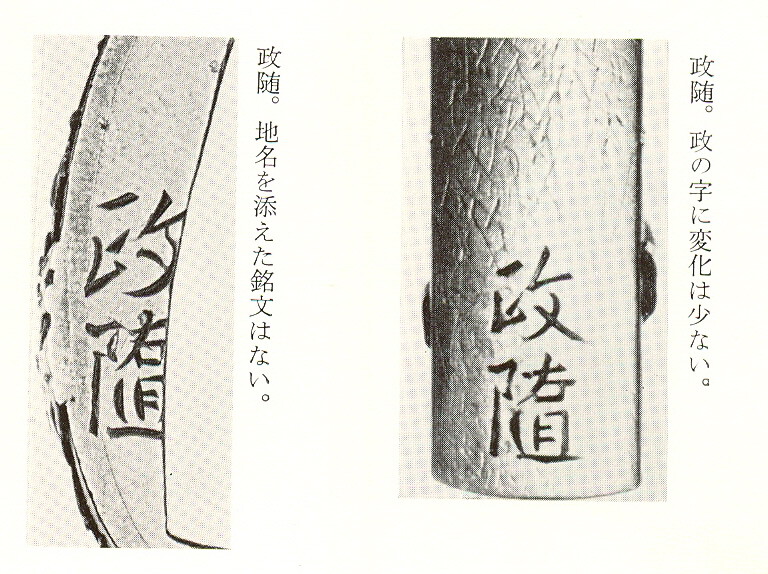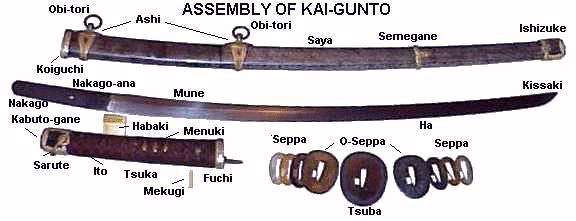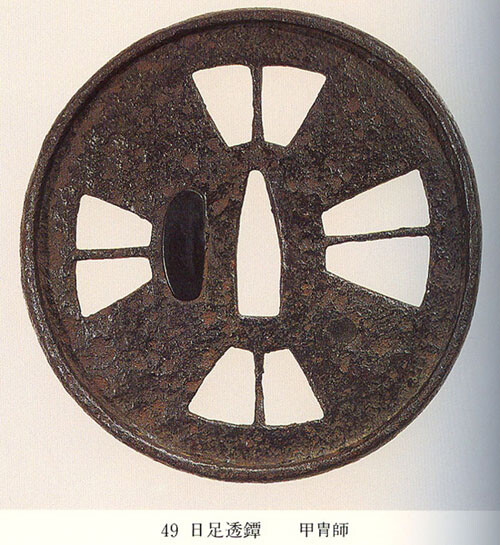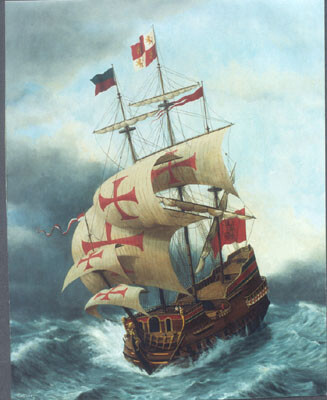-
Posts
2,984 -
Joined
-
Last visited
-
Days Won
27
Content Type
Profiles
Forums
Events
Store
Downloads
Gallery
Everything posted by Pete Klein
-
Yanagawa Masatsugu, (1670-1721) student of the first Yokoya Soyo, was the founder of the Yanagawa school with Y. Naomasa being his second son the heir.
-
OK -- limited information available in English: from Haynes Index -- Naoyoshi, Sano also Yanagawa worked in Edo, eighteenth century student of Naonori, Konakamura note: Haynes listing shows some inconsistency here as he lists Naonori as a student of Sano Naoyoshi and of Yanagawa Naomasa the founder of the Yanagawa school but there is a timeline problem as he lists Naoyoshi as dying in 1862 and Naomasa died in 1757. Okabe Kakuya (Japanese Sword Guards 1908) lists Naoyoshi as being a student of Naomasa so I believe the problem is with Naoyoshi's date of death as listed by Haynes. cont.: The founder of the Sano family school. He was still working beyond the age 66. Retainer of the Akimoto Daimyo of Tatebayashi in Kozuke Province. Mei: Wakayama -- Toso Kinko Meiji Taikei vol. I, page 100 - 103 Ken'ichi Kokubo -- Shinsen Kinko Meikan revised ed., page 264. from 'Tosogu', Gemmell, Graham 1991 ...'the predilection that the Sano School appears to have had for "single object" decoration, as opposed to landscape or genre scenes, and in particular for animals and other creatures. It also shows the enormous naturalism with which they were able to imbue their works...The Sano School, founded in the latter part of the eighteenth century by one Sano Naoyoshi, owes much of it's style to Naoyoshi's first master Yanagawa Naomasa. At one point in his career he moved way up north to become tsuba-ko to the Daimyo Akimoto Tajima no Kami Tsunetomo at the town of Yamagata in Dewa Province. Wakayama records only five direct pupils of Naoyoshi who took the Sano name although it is known that Naoyoshi also numbered amongst his followers several amateur workers of samurai rank. It is also said the Daimyo Akimoto was educated in the skills of metal working by his vassal. Japanese Sword Mounts... Gunsaulus, Helen C. 1923 Chicago corroborates the above information in general. note: The Yanagawa School of Naomasa numbered amongst it's members Inagawa Naokatsu, Y. Naohisa, Y. Naomitsu, Y. Naoharu who's student Hogen Haruaki was and is highly regarded to this day.
-
I have to agree totally with Curran. I think that the way the metal around the mimi is worked is very much like the Tanaka school as is the overall shape. However, the craftsmanship is not up to snuff and the Tanaka school 'usually' used formed kuchi beni in the nakagoana much as the Bizen Suruga and Akasaka Tadashige/Tadanori.
-
DB and Curran -- I am working on it but as work has been interfering with my play time (and I hate it when that happens) I need a bit more time. I'll try this evening. There is no single source so I'll go through 'the stacks' and find some relevent info. Later.
-
Oh -- I see -- well, I have to wonder if now after you've insulted Mr. Turner and have discovered the rest of we elitist's conspiracy to keep you from our closely guarded secrets you still want us to give you a shopping list so you can go around all of the hard, time consuming, and expensive work we've done? Sorry -- I don't think so. Spend ten or twenty thou on books and figure it out the old fashioned way -- earn it.
-
Dave -- Do you have a specific area of the field you are interested in? There are way too many to list. The problem you can run into with the older books is many poor attributions and the photography can be a little rough. Many of the books from arund 1900 are great if you are into researchimg European collections. The Joly books are interesting for this.
-
-
If I may I would like to offer a dissenting viewpoint on this topic. Please take a moment and read through the Ebay sellers description. It is full of lies. These are not old and they have no value above that of something sold on a street corner to tourists. To buy from sellers such as these supports their lies and their efforts to deceive and encourages them to perpetrate more of the same. Buy what you will, but I believe this level of fakery is the root many problems we face in this field of endeavor. And to go a bit further, it supports an economy built on forgery, whether it be tsuba or Gucci knockoffs, which undermines other's legitimate efforts. Just my opinion.
-
I believe there might be a problem with where the notch is cut out. WWII koshirae were worn as tachi, and therefore slung blade down. That would require this tsuba to be rotated 180 degrees and the design would be upside down. That's not to say it didn't happen, but I have to wonder if it was a later 'retrofit' of some kind to a sword without a tsuba as in an Ebay sale or something such as that. Hard to say. (I've posted the picture from Dr. Stein's site http://www.geocities.com/alchemyst/nihonto.htm
-
Kenji Mishina has a good page on this: http://www007.upp.so-net.ne.jp/m-kenji/ ... habaki.htm
-
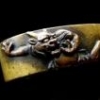
Dai Token Ichi #19
Pete Klein replied to Ichi's topic in Sword Shows, Events, Community News and Legislation Issues
You can order the catalog online at Tokugawa Art. They have a secure order site and you can use Paypal too. Very reasonable price too. Just hit on the catalog link on the left of the home page. http://www.sanmei.com/shop_e/enter.html -
I have to agree with Milt a bit here. I often get the feeling that we tend to be led by what we believe others believe is right. Had a single malt scotch recently? How about a cigar or a glass of Chardonnay? Poker anyone? I happend to like this tsuba very much but then I liked it the first time I saw it in the Sasano Sukashi Tsuba book way back when and have liked it all along. If the money was there it wouldn't be. But, reality is what it is. I have had the opportunity to speak with some 'higher ups' as they say and the piece is considered a bit high priced for what it is (shodai Yamakichibei, published in multiple reference books, who is in line with Nobuie and Kaneiye in importance of early tsubako masters). If it was going to go Juyo it most likely would have already. From what I understand from someone who has seen it first hand it is is a knockout. As for Japanese collectors I have a book on Ebay which is a private printing from the Shoyukai, an invitation only group of fittings collectors in Japan, which has all sorts of different kinds of fittings in it from iron through machibori, tsuba to menuki, so in lieu of going to Japan to find out personally I would say they take it all in stride, probably having personal likes and fields of expertise and collect for quality rather than because 'it's supposed to be what we collect', because they are sort of the 'we' that we think we listen to. IMHO!
-
The one I believe you are referring to is on the upper left of page seven, May 2006 issue of To-Ron and it is attributed to Kachushi, which would denote around the beginning of Edo as they did not use 'Ko' prefix. It's too elaborate to be classified under the 'Tosho' category in my experience. It doesn't hit me like Ko Shoami either but it could be Shoami, also perhpas Myochin. Hard to say. Some of these pieces are a bit nebulous and you need to be able to see the iron up close and even then it's not always easy to pin point it.
-
OK -- a bad pun I just couldn't resist. I found a very similar tsuba in tha Sano Museum's book, 'Sukashi Tsuba, Kofun to Edo', pg. 47 #49. It is described as, 'Sukashi Tsuba of Rays of the Sun design (hiashi). Katchushi, Muromachi Period', etc.
-
Welcome -- Milt hit it on the head -- definately Soten School, also known as 'Hikone Bori' or Hikone carving. Hikone is where Soten resided after leaving Kyoto during the mid-Edo period, around 1730. He founded a large school and according to Torigoye there were two generations of masters with many students. This was a very popular style at the time as the samurai dress had become rather ornate and colorful due to the long period of peace.
-
Hello Henry -- I would tend to think it might very well be. If you look at the negative sukashi image it seems quite reminiscent of a Portuguese cross which would make sense as they were involved with bringing Christianity to Japan in the sixteenth century. Also, the hisu-ana has the narrow elongated (ovoid) shape of pre-Edo hitsu-ana and the piece in general has a Katchushi look to it. The metal looks old also and I wouldn't be surprised if there were some tekotsu. I cannot of course speak for condition as that is dificult to tell from the pictures. I think it would be considered a candidate for that category.
-
I have compiled a listing of auction catalogs which have in my personal experience been of great help. It can be found on: http://tosogu.blogspot.com/ under the above listing. Please feel free to take a look
-
The translation of the book, 'Tsuba, An Aesthetic Study', by Torigoye/Haynes is out of print and is very difficult to find. I have asked about a reprint from the Northern California Japanese Sword Club and have been told they have no plans to reprint it partly due to the inability to reprint the pictures with any clarity (technical issue). Do keep an eye out however as 'Beginners Luck' rules! Take care.
-

Jersey shinsa show
Pete Klein replied to Bungo's topic in Sword Shows, Events, Community News and Legislation Issues
Although swords are not my primary interest I have noticed something in big black Kanji on the NTHK origami: Sho Shin, meaning authentic/genuine. They are therefore very careful about what they call 'authentic/genuine'. Also, when you get your NBTHK submission back there is a little yellow tag which went along the path with it at the shinsa. If it failed it usually will have written in Japanese why it failed, as in gimei, modern, etc. Not as good as the NTHK worksheets but a lot of folks miss that because it is in Japanese. I have, unfortunately, had much experience in this LOL! -
The Haynes Index is a different publication than the Haynes Auction Catalogs of the 1980's (ten in all). It is a primary reference for cross indexing fittings makers to other publications, finding historical data, and finding mei verification in other publications but it is nonpictorial and is really not intended for neophytes. The auction catalogs are well illustrated (although some may be a bit faded at times) and have very good descriptions of the pieces by Mr. Haynes who is considered by most to be the Dean of the study in North America. They are available through dealers at times but tend to get a bit pricey (look up at http://www.bookfinder.com or other on-line resources catering to the study). They do show up on Ebay from time to time and usually run ~$100 each but I have seen very few listed in the last year (number seven the only one I can remember).
-
http://tosogu.blogspot.com/ I have listed the catalogs http://www.floridatokenkai.com/ Information of the organization/show On Ebay I'd look under 'Tsuba', or 'Japanese Sword', or specifically 'Sotheby Japanese' in this case. (I just checked and there isn't one listed at present). As for market cycles I wouldn't worry about it now. As with stocks buy quality over time and it all evens out anyway. Wait until you'r a 'pro' if such a thing exists and then get into market timing, IMHO. The three main shows are San Francisco in August, Tampa in February and Chicago which I believe is going to be in the Spring -- Milt will know as that's his back yard. The just finished New York Shinsa/show is not an annual event but would be welcomed of course.
-
If I might add to what has been offered I have been greatly helped by my reference library and believe that it is the foundation of any collection. Without reference materials you are basically running blind and at the mercy of any seller. I know there is a plethora of material out there but where I started was the Haynes catalogs and auction catalogs from Sotheby and Christies. Haynes can be a bit difficult to come by but the auction catalogs aren't and if you get those of the more major collections you can see first hand where others have gone before and have their experience be your guide. It is important to remember though that they are not always accurate in their attributions and therefore should not be taken literally but still they are a great beginners guide. I would suggest the Sotheby London 14 July 2005 sale of the Alan Harvie collection as the best to start with. It comes up on Ebay quite often. I am currently working up a 'my favorites' list of catalogs for Rich's blogg site so check in and that might help also as there are many catalogs which have too little data to be worthwhile buying. IMHO. It might also be recommended you take a trip down to Tampa next February for the yearly show of the Florida Token Kai. It's a wonderful show which many of the best US dealers attend and is not all that far from where you live. It is held right in the airport terminal at the Marriott so if you fly in you're there!


